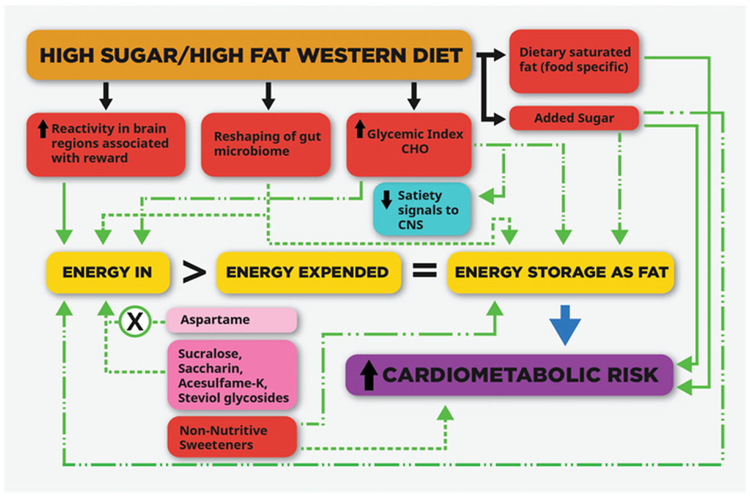Figure 1.
The potential links between dietary patterns and components and cardiometabolic risk. The totality of the evidence suggests that added sugar and certain saturated-fat-containing foods increase risk for cardiometabolic disease by metabolic mechanisms that are not mediated solely by positive energy balance and fat gain. There is also evidence that certain dietary patterns or components can increase ‘energy in’ and/or ‘energy storage as fat’ via mechanisms that are not explained solely by their specific contribution of calories to the ‘energy in’ side of the energy balance equation. The strength of the links is indicated by the green lines as follows. Solid green line: supported by evidence from animal studies and clinical observational and dietary intervention studies. Dashed line: evidence from prospective cohort studies and/or clinical dietary intervention studies suggests heightened risk during critical developmental periods and in persons with compromised glucose tolerance or insulin sensitivity. Dotted line: supported mainly by evidence from observational and/or animal studies only. Dotted line w/X: evidence from 100% of the clinical dietary intervention studies do not support the evidence from the observational and animal studies.

